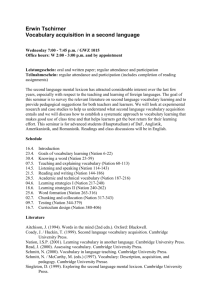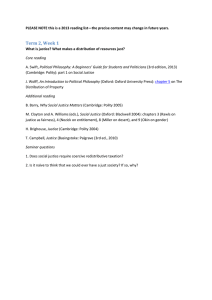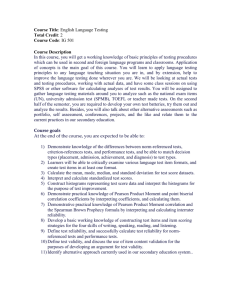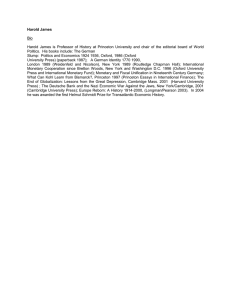REFERENCES Aziez, F. (2001). Examining the Vocabulary levels of
advertisement
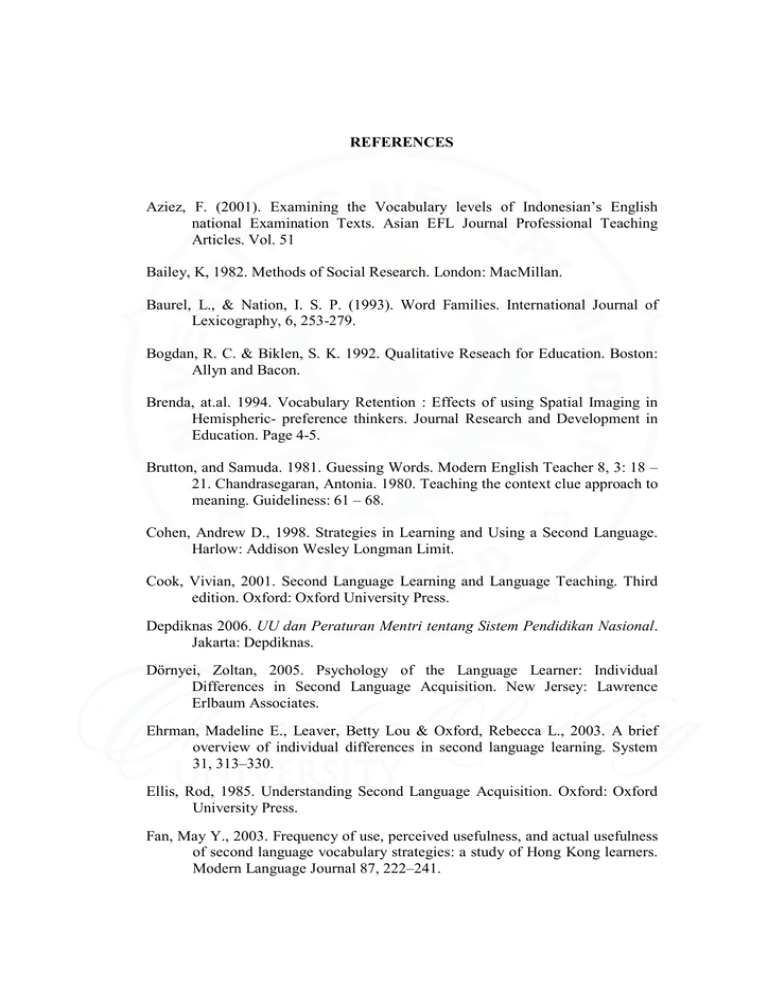
REFERENCES Aziez, F. (2001). Examining the Vocabulary levels of Indonesian’s English national Examination Texts. Asian EFL Journal Professional Teaching Articles. Vol. 51 Bailey, K, 1982. Methods of Social Research. London: MacMillan. Baurel, L., & Nation, I. S. P. (1993). Word Families. International Journal of Lexicography, 6, 253-279. Bogdan, R. C. & Biklen, S. K. 1992. Qualitative Reseach for Education. Boston: Allyn and Bacon. Brenda, at.al. 1994. Vocabulary Retention : Effects of using Spatial Imaging in Hemispheric- preference thinkers. Journal Research and Development in Education. Page 4-5. Brutton, and Samuda. 1981. Guessing Words. Modern English Teacher 8, 3: 18 – 21. Chandrasegaran, Antonia. 1980. Teaching the context clue approach to meaning. Guideliness: 61 – 68. Cohen, Andrew D., 1998. Strategies in Learning and Using a Second Language. Harlow: Addison Wesley Longman Limit. Cook, Vivian, 2001. Second Language Learning and Language Teaching. Third edition. Oxford: Oxford University Press. Depdiknas 2006. UU dan Peraturan Mentri tentang Sistem Pendidikan Nasional. Jakarta: Depdiknas. Dörnyei, Zoltan, 2005. Psychology of the Language Learner: Individual Differences in Second Language Acquisition. New Jersey: Lawrence Erlbaum Associates. Ehrman, Madeline E., Leaver, Betty Lou & Oxford, Rebecca L., 2003. A brief overview of individual differences in second language learning. System 31, 313–330. Ellis, Rod, 1985. Understanding Second Language Acquisition. Oxford: Oxford University Press. Fan, May Y., 2003. Frequency of use, perceived usefulness, and actual usefulness of second language vocabulary strategies: a study of Hong Kong learners. Modern Language Journal 87, 222–241. Folse, Keith S. 1993. Intermediate Reading Practices. Building Reading and Vocabulary Skills. University of Michigan Press. Gay, L. 1987. Educational Research: Competences for Analyses and Application. Ohio: Merril. Jiménez Catalán, Rosa María, 2003. Sex differences in L2 vocabulary learning strategies. International Journal of Applied Linguistics 13, 54–77. Kristiansen, Irene, 1998. Tehokkaita oppimisstrategioita esimerkkinä kielet. Vantaa: WSOY. Laufer, Batia, 1990. What’s in a word that makes it hard or easy: some Intralexical Factors that Affect the Learning of Words in N. Schmitt and M. McCarthy (eds.) Vocabulary: description, acquisition and pedagogy, Cambridge: Cambridge U.P., 140–155. Macaro, Ernesto, 2001. Learning strategies in Foreign and Second Language Classrooms. London: Continuum. Nation, I.S.P., 1990. Teaching and learning vocabulary. New York: Newbury House Nation, I.S.P. (2001). Learning vocabulary in another language. Cambridge: Cambridge University Press. Nation, Paul, 2006. Language Education – Vocabulary in The encyclopedia of language and linguistics, 2nd edition. Elsevier Ltd., Oxford, 494–499. Nagy, William & Anderson, Richard. 1984. How Many Words are there in Printed School English? Reading Research Quarterly 20: 233 – 253. Oxford, Rebecca, 1990. Language learning strategies: What every teacher should know. New York: Newbury House. O’Malley, J. Michael & Chamot, Anna Uhl, 1990. Learning strategies in second language acquisition. Cambridge: Cambridge University Press. Pusat Kurikulum. 2006. Kurikulum Tingkat Satuan Pendidikan. Jakarta Schmitt, Norbert, 1997. Vocabulary learning strategies in N. Schmitt and M. McCarthy (eds.) Vocabulary: description, acquisition and pedagogy, Cambridge: Cambridge U.P., 199–227. Sökmen, Anita J., 1997. Current trends in teaching second language vocabulary in N. Schmitt and M. McCarthy (eds.), Vocabulary: description, acquisition and pedagogy, Cambridge:Cambridge U.P., 237–257. Wassman, R & Rinsky L. A. 1993. Effective Reading in a Changing World. New Jersey: Prentice Hall.

